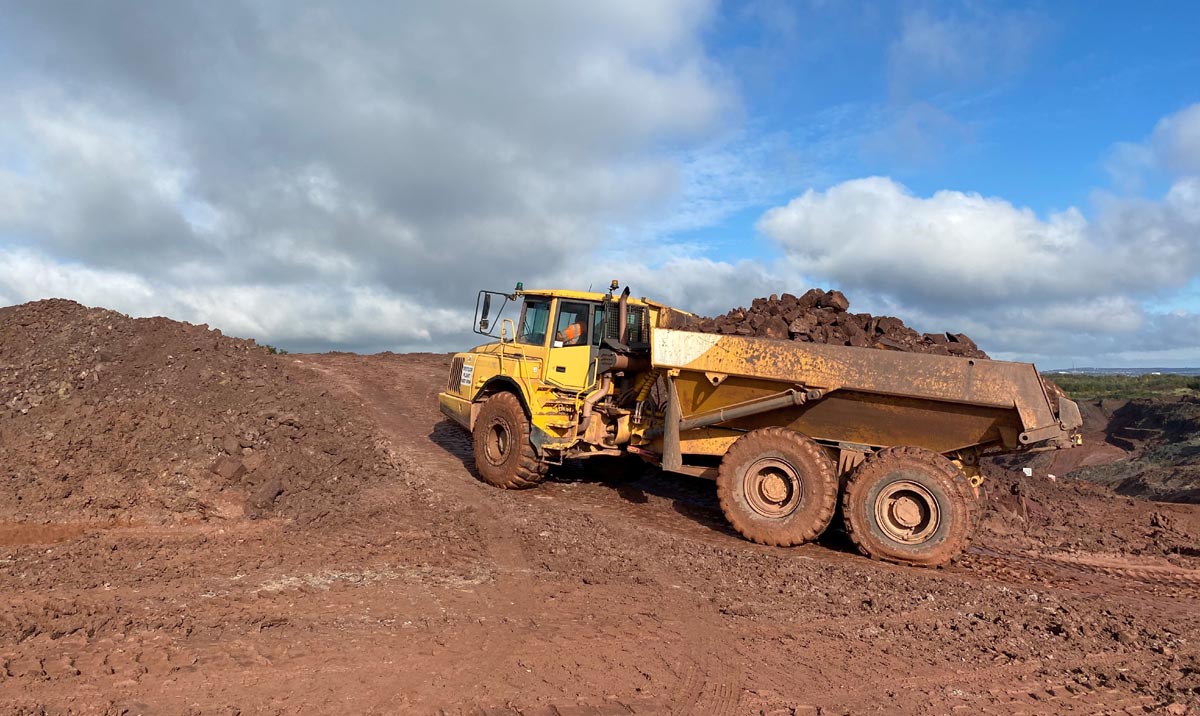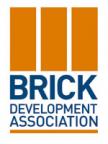Mixing clay bricks and pavers
Why is mixing important?
Seams of Etruria marl clay were laid down during the carboniferous age, around 350 million years ago, and deposits of this red, iron rich clay are found in North and South Staffordshire, the West Midlands and Wrexham. It is this special iron rich clay, when fired at high temperatures, that enables us to create traditional, robust Staffordshire clay building materials with very low water absorption and high strength characteristics that will last a long time.
We have our own reserves of Etruria marl clay from our quarry located around 10 miles from our Works in Brierley Hill. Clay is one of the most variable of geological materials and our challenge is to deliver clay to our extruders that is as consistent as possible. To achieve this, we build layered stockpiles from the different seams of clay at the quarry and we test the mineralogy and particularly the silica content. We then grind it and mix the clay at our Works, to ensure it has the right consistency for the specific products we are making. Even then, the variation inherent in the clay can yield differences within and between batches, and this is often regarded as the source of the characterful aesthetic of Ketley bricks, slips and pavers.

Staffordshire clay colours
Only natural ingredients are used to create our range of Staffordshire clay colours, simply Etruria marl clay, natural gas and water. Our expertise, developed over a long history in brick and tile making, enables us to produce our beautiful Staffordshire clay colours through careful control of the temperature and the amount of oxygen in the kiln. To obtain our Staffordshire Blue colour we create a reduction atmosphere in the kiln which converts the red ferrous oxide to a blue ferric oxide and fixes this colour for the life of the product. Red bricks are fired in an oxidising atmosphere with no reduction and for other colours we vary the amount of reduction to generate the tonal variations within firings that make Ketley clay products so special and characterful. While we strive to ensure our clay is as consistent as it can be, to deliver the durability synonymous with our clay products, variations can exist between each firing, a feature of our naturally coloured products.
Dimensions and tolerances
Variations within the clay will also affect the amount of shrinkage as the product dries and fires, impacting the final dimensions of the bricks and pavers. British Standards reflect the variations in the clay by setting out acceptable tolerances for both our brick and paver products and our factory control procedures ensure we more than meet the tolerances set out in BS EN 771-1:2011 for bricks and BS EN 1344:2013 for clay pavers. Mortar joints in the brickwork as well as gaps or joints for paving are established to accommodate these variances.
Good practice
Advice when laying clay bricks and pavers is always to mix from a minimum of 3 packs where possible, to disperse any irregularities within the product. For smaller jobs, where there are less than 3 pallets, it is advised to draw the bricks vertically or diagonally from the pack rather than horizontally layer by layer. Along with mixing bricks, using a consistent mortar colour is equally important to achieve the best result.









